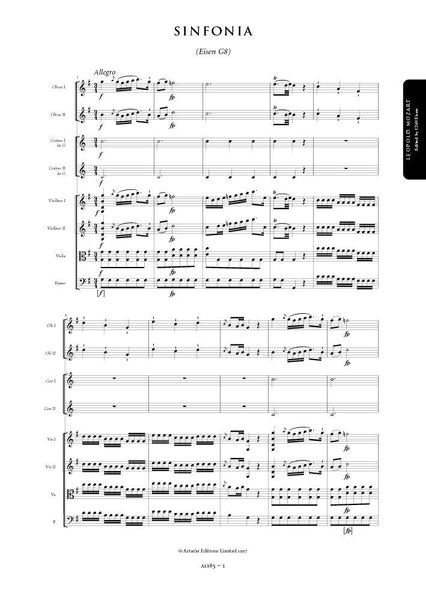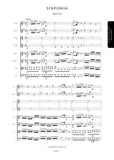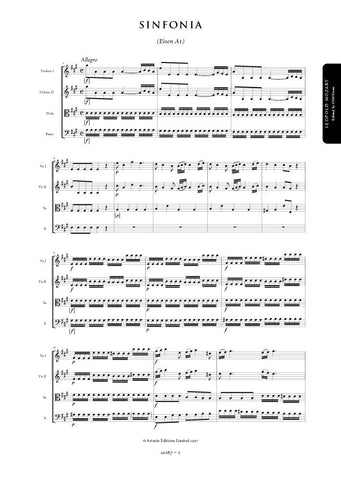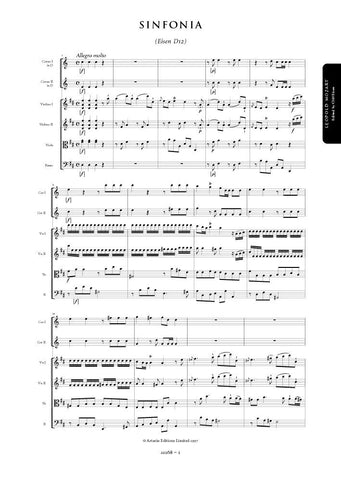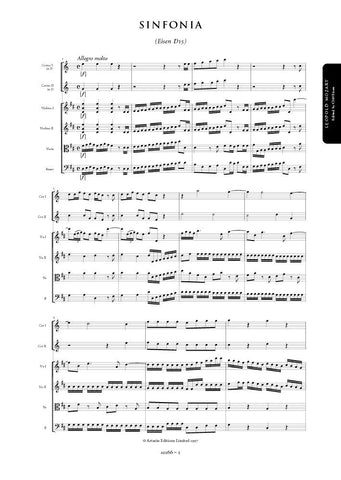Description |
Mozart, Leopold (1719-1787)
|
||||||||||||||||||
Audio sample |
|||||||||||||||||||
Details |
The symphony G8 (=K6 Anh. C11.09) is one of six symphonies by Leopold Mozart also attributed to Wolfgang (C3 = K6 Anh. C11.01, D11 = K6 Anh. C11.06, D14 = K6 731 , G3 = K6 Anh. C1 1 . 13, Bb6 = K6 Anh. C11.02). The earliest reference to the work is its listing as a symphony for strings, two oboes and horns in Breitkopf 's 1775 thematic catalogue, where it is attributed to Leopold Mozart. By the early nineteenth century, however, the symphony was attributed to Wolfgang in the catalogue of Mozart holdings owned by Breitkopf & Hrtel, and it was published under his name in 1841, with additional parts for flute, independent bassoons, trumpets and timpani. This attribution was later retracted, presumably based on the rediscovery of the original 1775 advertisement; when Breitkopf & Hrtel reissued the score in the late nineteenth century they added the remark: 'nach neueren Untersuchungen viel mehr Leopold Mozart zuzuschreiben'. Nevertheless, the symphony found its way into the earliest editions of the Kchel catalogue, as Anhang 293, and continued to be performed (with bloated orchestral forces) underWolfgang's name. A manuscript, originally attributed to Wolfgang and dated 1935 (Vienna, Gesellschaft der Musikfreunde, shelfmark XIII 19720), includes seven first and seven second violin parts, three viola parts, and eight violoncello and double bass parts. The composition itself is probably among Leopold Mozart's later works.With respect to formal design, phrase structure and scoring, it most closely approximates the socalled 'New Lambach' symphony, almost certainly composed by the early 1760s and possibly as late as 1767, after the Mozart family's return from the 'Grand Tour' of 1763-1766. In the absence of any even remotely authentic source, I have exercised considerable license in editing the Breitkopf & Hrtel score. The atypical flute, independent bassoon, trumpet and timpani parts have been excised; the scoring now approximates that listed in Breitkopf 's 1775 catalogue. Similarly, I have liberally added articulation and dynamics, which are given in brackets; editorial slurs are dotted. The staccato dots of the Breitkopf score have been replaced by strokes. As his violin treatise, autographs and authentic performing parts show, only one symbol was employed by Leopold Mozart (and later by Wolfgang): the stroke, which indicates varying shades of accent and articulation, depending on the context. The only instance in which Leopold notated dots was under slurs. Additionally, slurs have not been automatically added to connect grace notes and main notes. Although Mozart's Grndliche Violinschule prescribed the universal performance of such slurs, even in cases where they are not notated, irregularities in musical orthography, changes in musical style, and the specific contexts in which grace notes appear, all suggest that this 'rule' may not have applied in numerous instances. As with most aspects of eighteenth-century performance, the performance of slurs, articulation, tempo and ornamentation are subject to 'good taste'. Obviously wrong notes and rhythms have been corrected without comment. Cliff Eisen |
||||||||||||||||||
Score Preview (best viewed in full screen mode) |
|||||||||||||||||||
Loading...
Error




